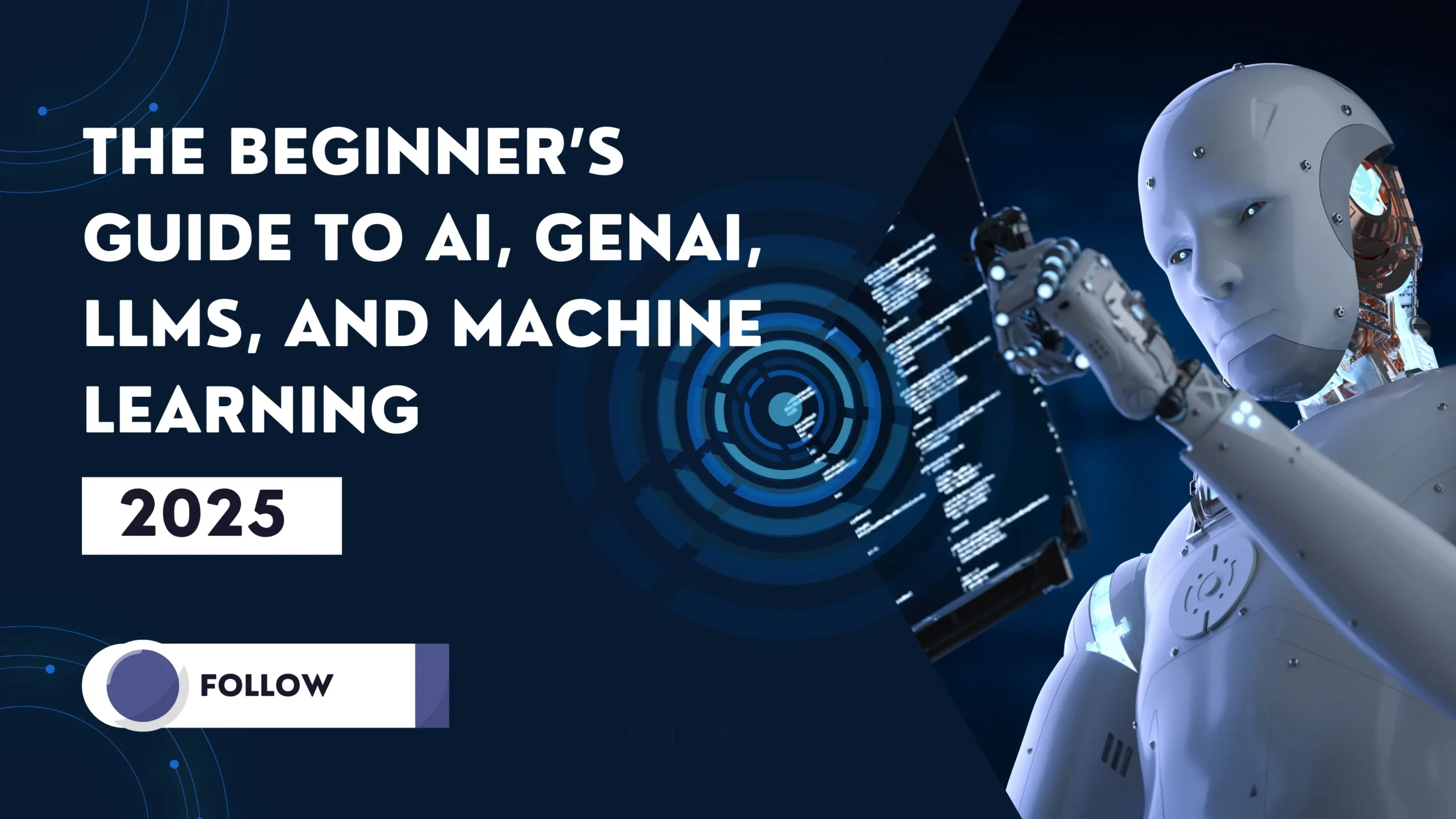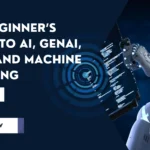Introduction
In 2025, AI is no longer a buzzword — it’s a core part of how we work, live, and grow our businesses. From ChatGPT to Copilot, Perplexity to Bard, everyone is talking about “AI Tools.” But what exactly is an AI Tool? And how are AI, Machine Learning, Deep Learning, and Generative AI connected?
If you’re just starting your journey into AI, this guide will simplify everything for you. Think of it as your beginner’s map into the world of artificial intelligence — written in a friendly, human tone and crafted to rank in Google and AI-powered search engines like GPT-based models.
1. What is Artificial Intelligence (AI)?
Definition: Artificial Intelligence (AI) is the science of building machines or software that can perform tasks that usually require human intelligence.
These tasks can include:
- Recognizing speech
- Making decisions
- Identifying images
- Translating languages
AI can be as simple as a chatbot on a website or as complex as autonomous self-driving vehicles.
Key Example: Siri, Alexa, Google Assistant — all are AI tools built to understand natural language and respond accordingly.
2. What is Machine Learning (ML)?
Definition: Machine Learning is a subset of AI. It’s a method where machines are given data and they learn from it, instead of being explicitly programmed.
Think of ML as the learning engine inside AI.
Types of ML:
- Supervised Learning
- Unsupervised Learning
- Reinforcement Learning
Example: Netflix recommending you movies based on your watch history.
3. What Are Neural Networks?
Definition: Neural Networks are the backbone of most modern ML algorithms. They are inspired by the human brain and work by passing information through layers of nodes (like artificial neurons).
They help computers recognize patterns such as:
- Image recognition (e.g., identifying a dog in a photo)
- Language translation
4. Deep Learning: The Evolution of ML
Definition: Deep Learning is a more advanced form of machine learning. It uses complex neural networks with many layers — hence the term “deep.”
This is what powers tools like:
- ChatGPT
- Deepfake videos
- Self-driving car technology
Why It Matters: Deep learning allows AI to analyze vast amounts of unstructured data like images, sound, and text.
5. Generative AI: Creating Content with AI
Definition: Generative AI is a type of AI that can create new content — text, images, audio, and even video.
Unlike traditional AI, which only analyzes data, GenAI generates new content. Popular tools in this space include:
- ChatGPT
- MidJourney (images)
- DALL·E
- GitHub Copilot (code)
Real-World Use Cases:
- AI-generated resumes
- Product descriptions for eCommerce
- Voiceovers using synthetic voices
6. What Are Large Language Models (LLMs)?
Definition: Large Language Models (LLMs) are a specific type of generative AI trained on massive amounts of text data to understand and generate human-like language.
Examples include:
- GPT-4
- Google Gemini
- Claude
These models can:
- Answer questions
- Write emails
- Generate code
- Translate languages
How it Works: LLMs predict the next word in a sentence, similar to how your phone suggests the next word as you type.
7. Visual Hierarchy of AI (Diagram Explanation)
The diagram above shows the nested structure of modern AI:
- Artificial Intelligence (The largest domain)
- Machine Learning (ML is a subset of AI)
- Neural Networks (Algorithms inspired by the brain)
- Deep Learning (Neural networks with many layers)
- Generative AI (Can generate new content)
- Large Language Models (Specific to natural language understanding)
- Generative AI (Can generate new content)
- Deep Learning (Neural networks with many layers)
- Neural Networks (Algorithms inspired by the brain)
- Machine Learning (ML is a subset of AI)
Think of this as layers inside an onion — each technology builds upon the one before it.
8. Common Questions People Ask (FAQs)
Q1: Is ChatGPT an AI tool or a generative AI tool?
A: ChatGPT is a Generative AI tool built on a Large Language Model (LLM) like GPT-4.
Q2: What’s the difference between AI and ML?
A: AI is the broader concept of machines doing smart things. ML is a way to achieve AI through learning from data.
Q3: What is the use of deep learning?
A: Deep learning powers advanced AI systems like voice assistants, image recognition, autonomous vehicles, and LLMs.
Q4: What’s the role of LLMs in AI tools?
A: LLMs make tools like ChatGPT and Bard capable of understanding and responding in natural human language.
Q5: How do I know if a tool is really AI?
A: A true AI tool uses machine learning, neural networks, or LLMs to automate, assist, or generate intelligent outputs.
9. Final Thoughts
As AI continues to evolve in 2025, it’s more important than ever to understand what powers these tools behind the scenes. From Artificial Intelligence to Machine Learning, Deep Learning, and now Generative AI and LLMs — the stack is getting deeper and more powerful.
By understanding this foundation, you’ll be better equipped to:
- Choose the right AI tools for your business
- Stay updated with the latest tech
- Avoid hype and focus on true innovation
Whether you’re a beginner or a professional in any field, this post will help you start your AI journey with clarity.

